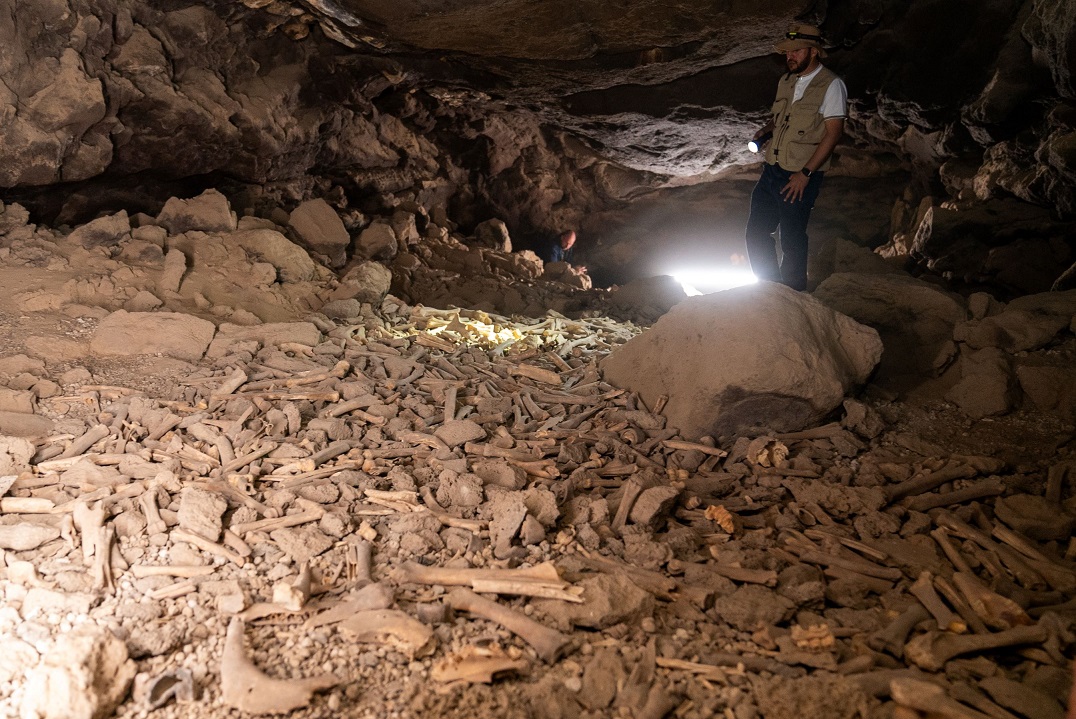The Saudi Heritage Commission, responsible for documenting and preserving Saudi Arabia’s tangible and intangible heritage under the Ministry of Culture, announced the discovery of human occupation evidence in Umm Jirsan cave, located in Harrat Khaybar, located north of Madinah, in northwestern Saudi Arabia.
Measuring 1,500 meters long, 45 meters wide, and with a maximum height of 12 meters, Umm Jirsan is the Kingdom’s longest lava cave. The findings have been published in the peer-reviewed journal PLOS One. It is considered the first study in the field of archaeological research in caves located in the Kingdom.
A team of Saudi and international researchers, including scientists from King Saud University, the Max Planck Institute from Germany, and the Saudi Geological Survey, have worked collaboratively as part of the Green Arabian Peninsula project. Their multidisciplinary field research focused on preserving and highlighting mankind’s shared history in the Arabian Peninsula. Previously reported findings by the Heritage Commission revealed evidence of human habitation in an ancient lake outside Tabuk, in the Kingdom’s northwestern regions, dating back around 120,000 years.
Through their archaeological surveys and excavations in multiple parts of the Umm Jirsan cave, the scientists have uncovered ancient settlements dating back to the Neolithic period. Those settlements revealed traces of pastoral groups which could be recorded until the Copper Age and Bronze Age periods. The precise antiquity of the site was determined using carbon-14 dating. The research unearthed traces of animal bones dating back 4,100 years BCE. Also, the oldest human skull found dates to 6,000 years BCE.
The research indicates that prior to the current arid climate and desolate nature of the area, a much more temperate and active environment, including the presence of many now extinct animals, existed. Findings included wood, cloth, rock-carved scenes grazing goats, cows and dogs used for hunting. Among the thousands of animal bones found, were remnants of hyenas, horses, camels, deer, caribou, cows, and domestic donkeys.
Analysis of human skeletal remains, using radioactive isotopes, indicated that humans relied primarily on meat for sustenance; but also, later began nourishing themselves with grains, as evidenced by the emergence of agriculture.
The research indicates the importance of caves used by human groups and ancient volcanic magma paths in the Kingdom of Saudi Arabia.


